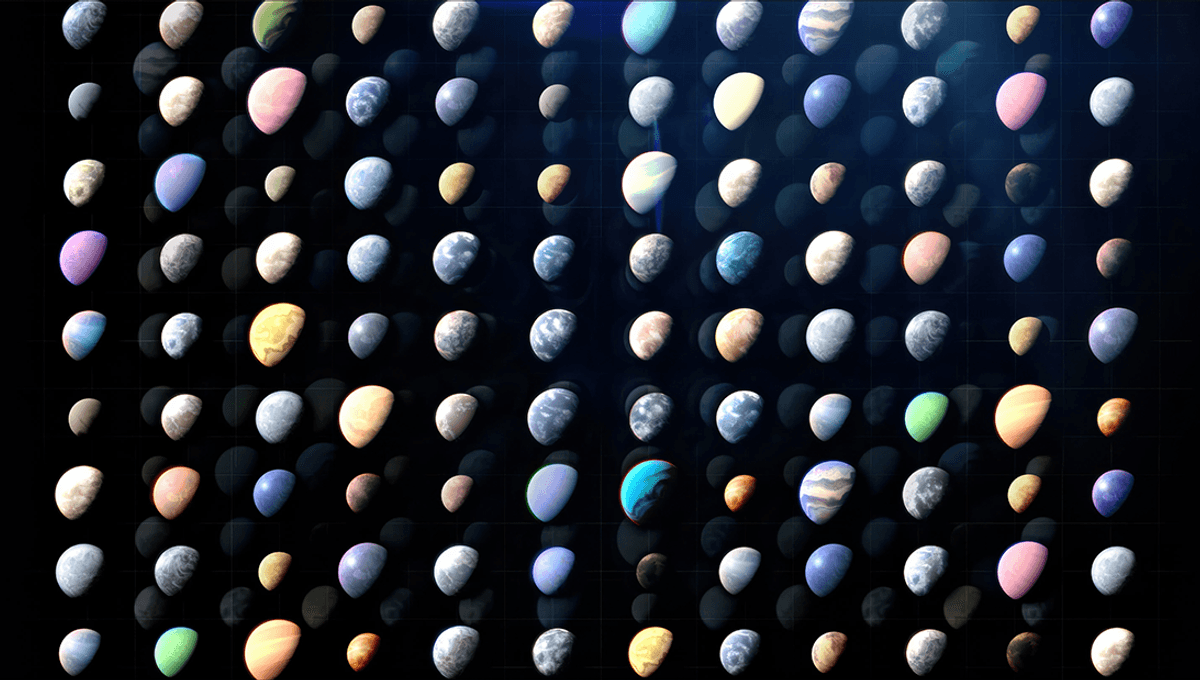
NASA has announced a new milestone in the hunt for planets around other star systems, known as “exoplanets”.
Humanity has been looking at the stars for a long time, but the earliest detections of planets orbiting around them have come in the last century, with improvements to telescope technology. But when we first made a detection of an exoplanet is a little murky, with possible sightings of such planets possibly going back to 1917, though only being confirmed a century later.
The first confirmed discovery of an exoplanet was announced in 1992, when astronomers Aleksander Wolszczan and Dale Frail reported two or more planet-sized bodies orbiting pulsar PSR1257 + 12 using the Aricebo telescope. The first confirmed discovery of a planet orbiting a main-sequence, Sun-like star, came a few years later in 1995, in the form of a “hot Jupiter” planet.
“The presence of a Jupiter-mass companion to the star 51 Pegasi is inferred from observations of periodic variations in the star’s radial velocity,” the team announced at the time. “The companion lies only about eight million kilometres from the star, which would be well inside the orbit of Mercury in our Solar System. This object might be a gas-giant planet that has migrated to this location through orbital evolution, or from the radiative stripping of a brown dwarf.”
Where it gets murky is prior detections that indicated possible planets, but were not confirmed at the time. One such detection took place in 1988, orbiting around a white dwarf-pulsar pair, but this was not confirmed until 2003.
Another goes back much further than that. In 1917, astronomer Ben Zuckerman was attempting to look at “polluted” white dwarf stars. These are dense remnants of ancient stars, some of which had odd spectral lines, indicating the presence of heavier elements that shouldn’t be there, as they should be hidden within the remnant.
“The first polluted white dwarf identified is called van Maanen’s Star (or “van Maanen 2″ in the scientific literature), after its discoverer Adriaan van Maanen,” NASA explains, adding that the object was spotted due to its relative motion to other stars.
“[Astronomer] Adams interpreted the spectrum to be of an F-type star, presumably based on the presence and strength of calcium and other heavy-element absorption features, with a temperature somewhat higher than our Sun. In 1919, van Maanen called it a ‘very faint star’.”
We now know that the star, 14 light-years away, contains an exoplanet, and that the 1917 team may have seen the first evidence of an exoplanet.
Up until the mid-1990s, detections were tantalizing as they were rare. But since then, there has been an explosion in exoplanet detections, thanks to dedicated space-based observatories like Kepler and TESS, as well as improved Earth-based methods and telescopes. Now, NASA has announced a new milestone: we have reached 6,000 confirmed exoplanet detections.
To further put the rate of exoplanet discovery in perspective, the 5,000 exoplanet threshold was only passed three years ago.
“This milestone represents decades of cosmic exploration driven by NASA space telescopes — exploration that has completely changed the way humanity views the night sky,” Shawn Domagal-Goldman, acting director, Astrophysics Division at NASA Headquarters in Washington, said in a statement.
“Step by step, from discovery to characterization, NASA missions have built the foundation to answering a fundamental question: Are we alone? Now, with our upcoming Nancy Grace Roman Space Telescope and Habitable Worlds Observatory, America will lead the next giant leap — studying worlds like our own around stars like our Sun. This is American ingenuity, and a promise of discovery that unites us all.”
With these new detections have come a lot of surprises. Astronomers have found volcanic hellscapes like CoRoT-7b and K2-141b, where supersonic winds whip molten rock across oceans of magma, giant puffballs with the density of Styrofoam like WASP-127b, and giant ice worlds where diamonds fall like rain. Looking at our own Solar System, we also see an equal number of rocky planets and gas giants, but looking at other systems, we have found rocky planets to be more common. Could it be that our Solar System is the oddball, or that we have more rocky planets within it to be discovered?
“Each of the different types of planets we discover gives us information about the conditions under which planets can form and, ultimately, how common planets like Earth might be, and where we should be looking for them,” Dawn Gelino, head of NASA’s Exoplanet Exploration Program (ExEP), added. “If we want to find out if we’re alone in the universe, all of this knowledge is essential.”
While astronomers have reached this big new milestone, no single planet is listed as the 6,000th found. Over 8,000 more await confirmation, having been reported as exoplanet candidates. Many more will be spotted and confirmed by the European Space Agency’s Gaia mission, as well as NASA’s upcoming Nancy Grace Roman Space Telescope. The US space agency will focus on finding rocky planets similar to Earth, and observing their atmospheres for potential signs of life. So far, out of potentially billions in our own galaxy, the JWST has analyzed just 100. Exciting times in exoplanet research lie ahead.
Source Link: "America Will Lead The Next Giant Leap": NASA Announces New Milestone In Hunt For Exoplanets